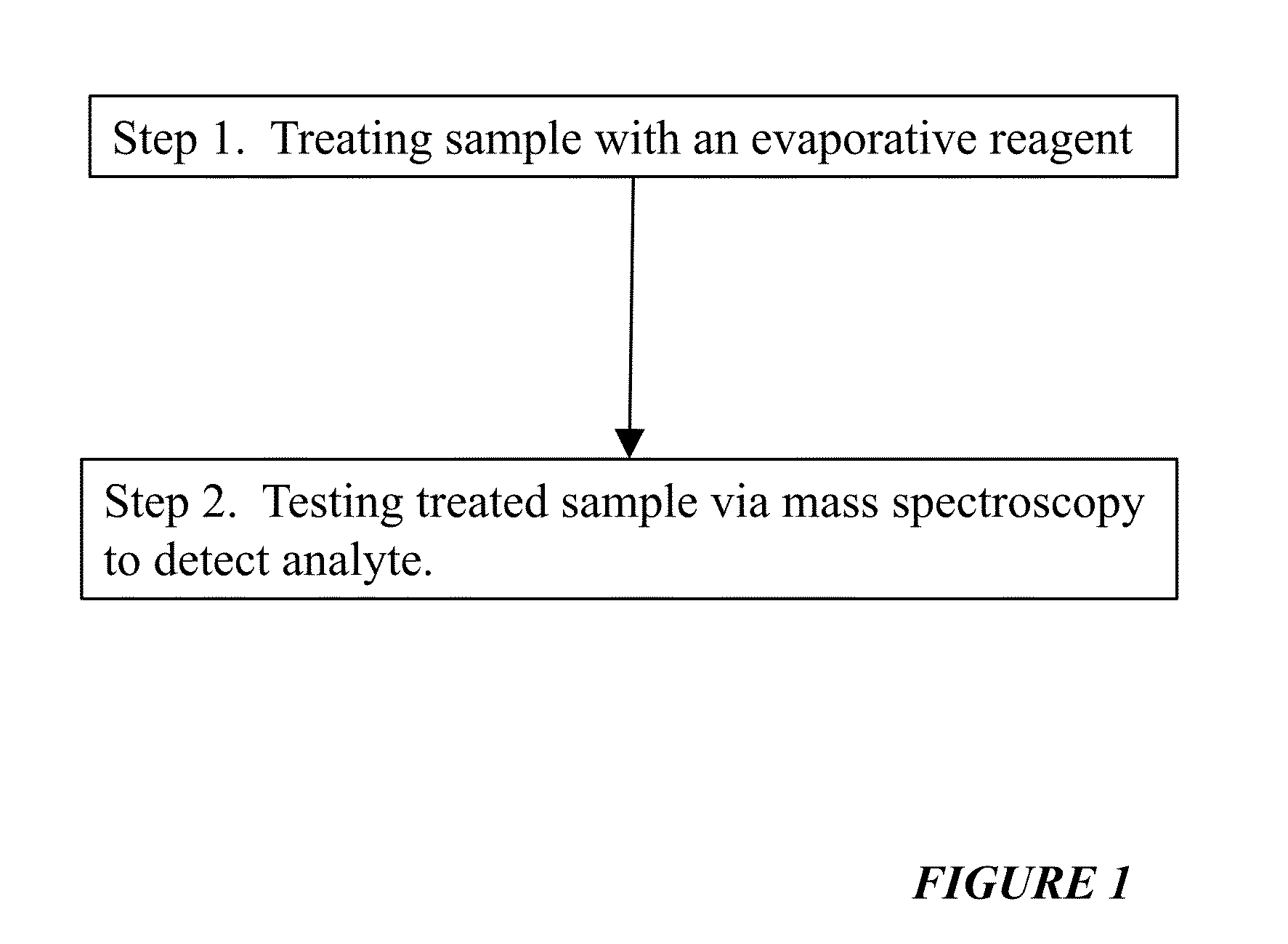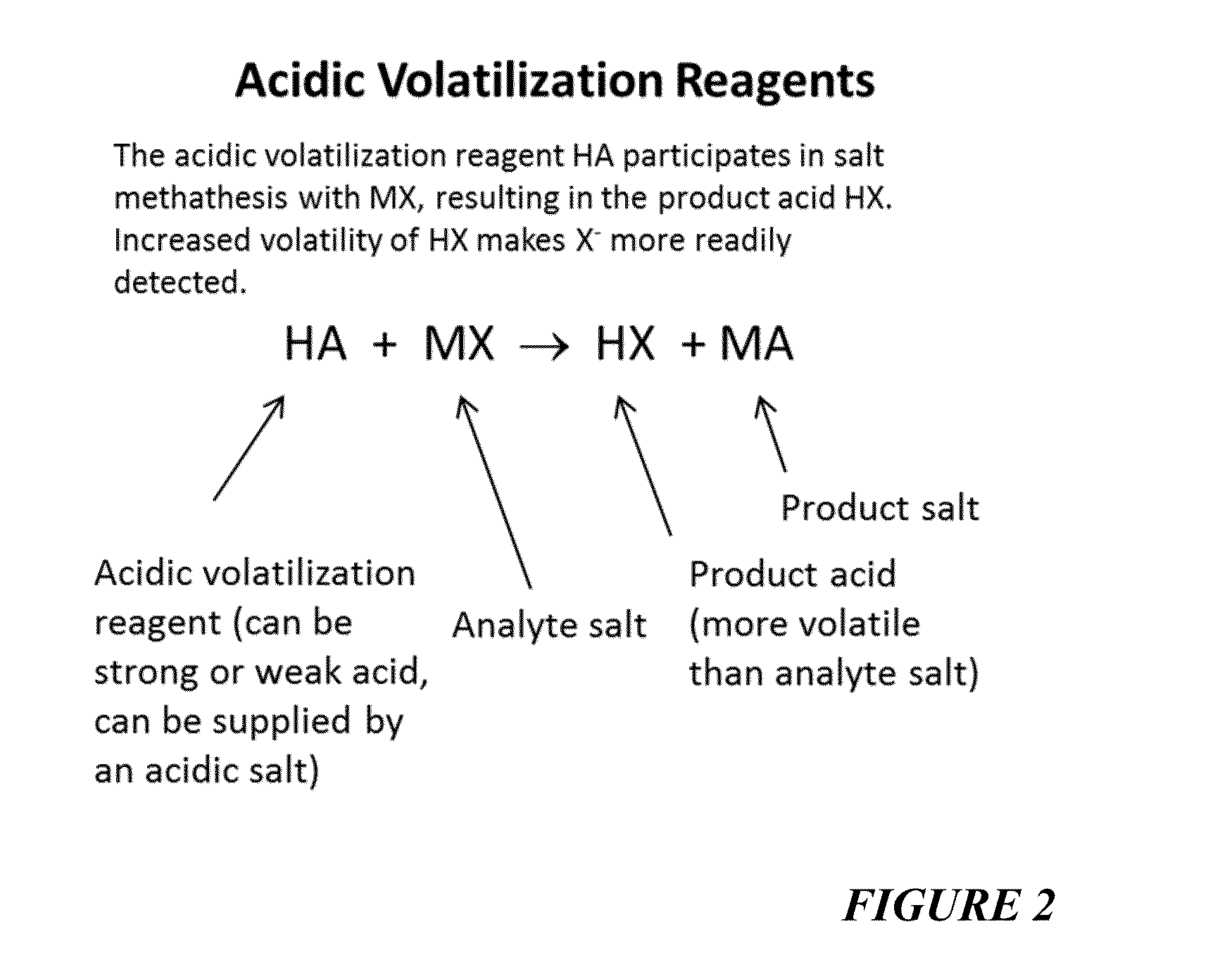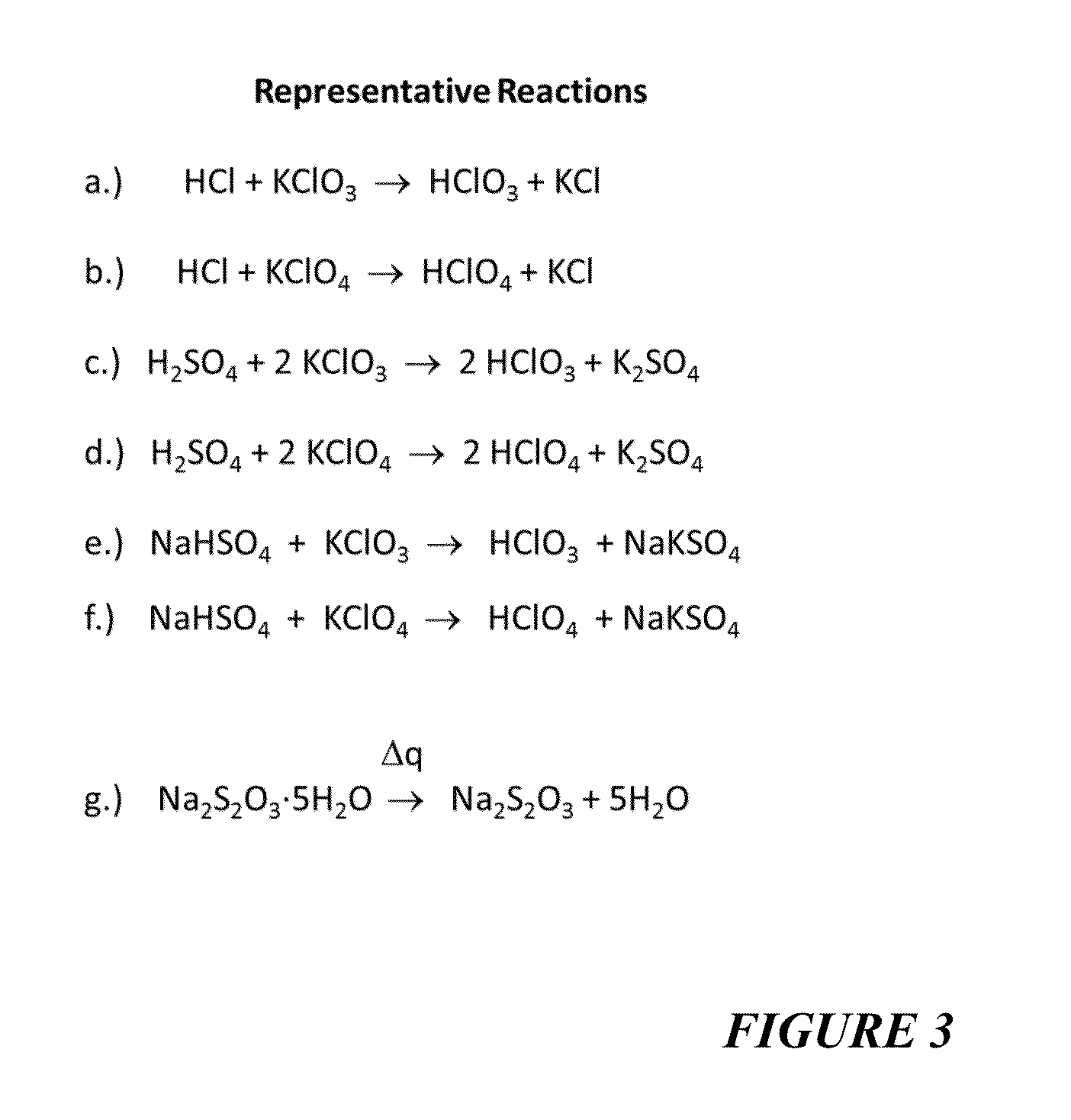Reagents For Enhanced Detection Of Low Volatility Analytes
a low volatility analyte and enhanced detection technology, applied in the field of spectrometry, can solve the problems of reducing sample throughput, destroying other more delicate analytes, and low vapor pressure of inorganic oxidizers, so as to improve the detection of inorganic oxidizers, easy to detect, and easy to vaporize
- Summary
- Abstract
- Description
- Claims
- Application Information
AI Technical Summary
Benefits of technology
Problems solved by technology
Method used
Image
Examples
example 1
[0099]FIG. 9 illustrates enhancement in observed mass spectrometer ion signal upon addition of an acidic volatizing reagent to an inorganic oxidizer salt. More specifically, FIG. 9 is a graph of normalized mass spectrometer signal (Y) vs. time (X) obtained by introduction of liquid sulfuric acid (20 μl, 10%) onto a 5 μg sample of dried potassium perchlorate in the desorber unit of a TD APCI mass spectrometer at 150° C. In this instance, the mass spectrometer was in MRM mode, measuring the 99→83 Da loss channel. Note the dramatic increase in signal at 0.14 minutes when the acidic volatilizing reagent was pre-mixed with the potassium perchlorate sample. In the absence of the acidic volatilizing reagent, no signal was observed from potassium perchlorate at such a low temperature.
example 2
[0100]In another example, in order to increase the amount of free perchlorate anion available for detection, an acidic reagent known to protonate the perchlorate anion (35ClO4−) was added to a dried potassium perchlorate sample. In these experiments, a liquid reagent, namely 5 μl of 0.01% sulfuric acid (CAS#7664-93-9), was added over a previously dried 5-μg sample of potassium perchlorate on an inert silicon wafer surface. The silicon wafer was then transferred to a thermal desorption unit on a TD APCI source for detection via mass spectrometry. The experimental data presented in FIG. 10 shows the benefits of acidic reagents in terms of both increased mass spectrometer signal and enabling thermal desorption to take place at lower temperatures.
[0101]More specifically, FIG. 10 is a graph of thermal desorption temperature (Y axis) vs. experimentally measured background subtracted normalized mass spectrometer signal (X axis) for detection of chlorate and perchlorate salts (left traces),...
example 3
[0102]In order to determine the minimum acidity (maximum pH) at which the acidic volatilization mechanism was still functional, a series of signal vs. pH measurements were carried out. FIG. 11 shows the results of an experiment conducted in order to determine the maximum acceptable pH for the acidic volatilization reagent sulfuric acid (H2SO4). FIG. 11 is a graph of experimentally measured background subtracted normalized mass spectrometer signal (Y axis) vs. pH (X axis) of the acidic volatilization reagent sulfuric acid (H2SO4) for detection of potassium perchlorate. The numbers next to the data points indicate the percent solution (v / v) of sulfuric acid corresponding to each measurement. A 0.01% (pH 2.74) sulfuric acid solution still produces an acceptable amount of signal enhancement for detection of the perchlorate anion. As shown in FIG. 11, the ion signal generated by acid volatilization of potassium perchlorate (KClO4) begins to drop off after a pH of 2 is reached. An accepta...
PUM
| Property | Measurement | Unit |
|---|---|---|
| pKa | aaaaa | aaaaa |
| temperatures | aaaaa | aaaaa |
| temperatures | aaaaa | aaaaa |
Abstract
Description
Claims
Application Information
 Login to View More
Login to View More - R&D
- Intellectual Property
- Life Sciences
- Materials
- Tech Scout
- Unparalleled Data Quality
- Higher Quality Content
- 60% Fewer Hallucinations
Browse by: Latest US Patents, China's latest patents, Technical Efficacy Thesaurus, Application Domain, Technology Topic, Popular Technical Reports.
© 2025 PatSnap. All rights reserved.Legal|Privacy policy|Modern Slavery Act Transparency Statement|Sitemap|About US| Contact US: help@patsnap.com



